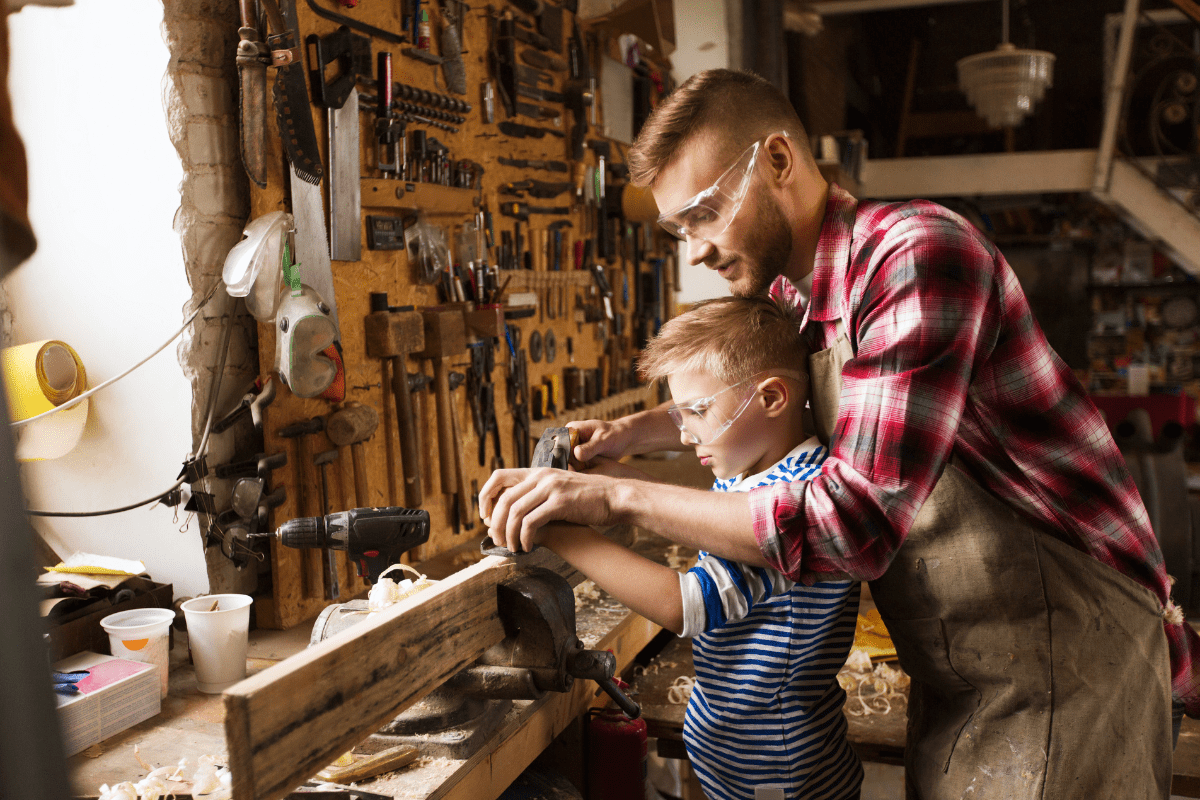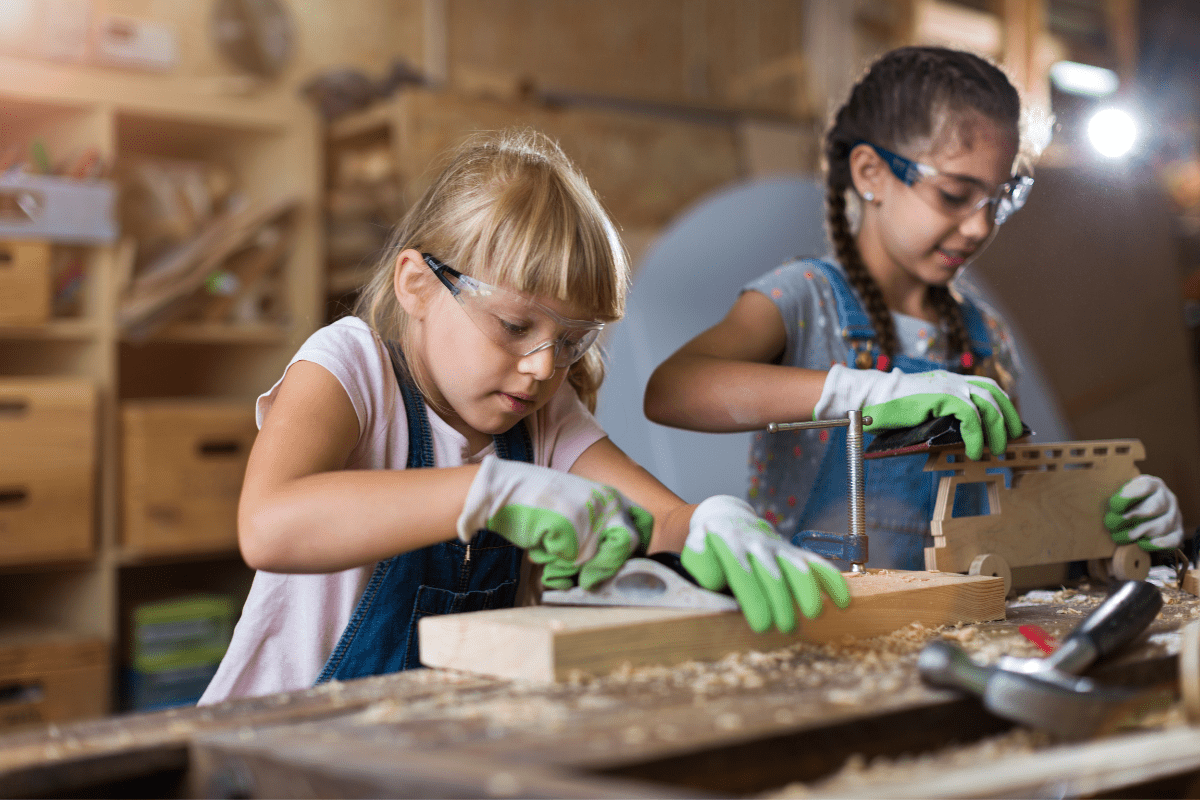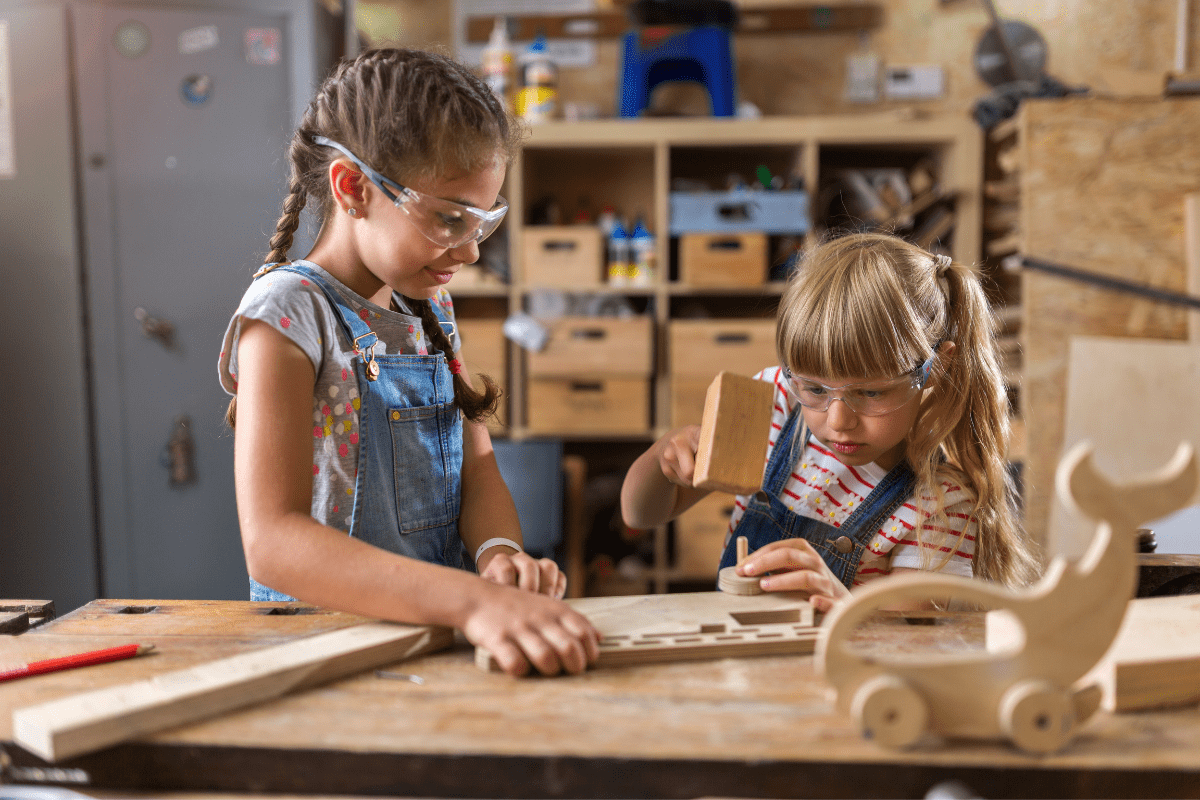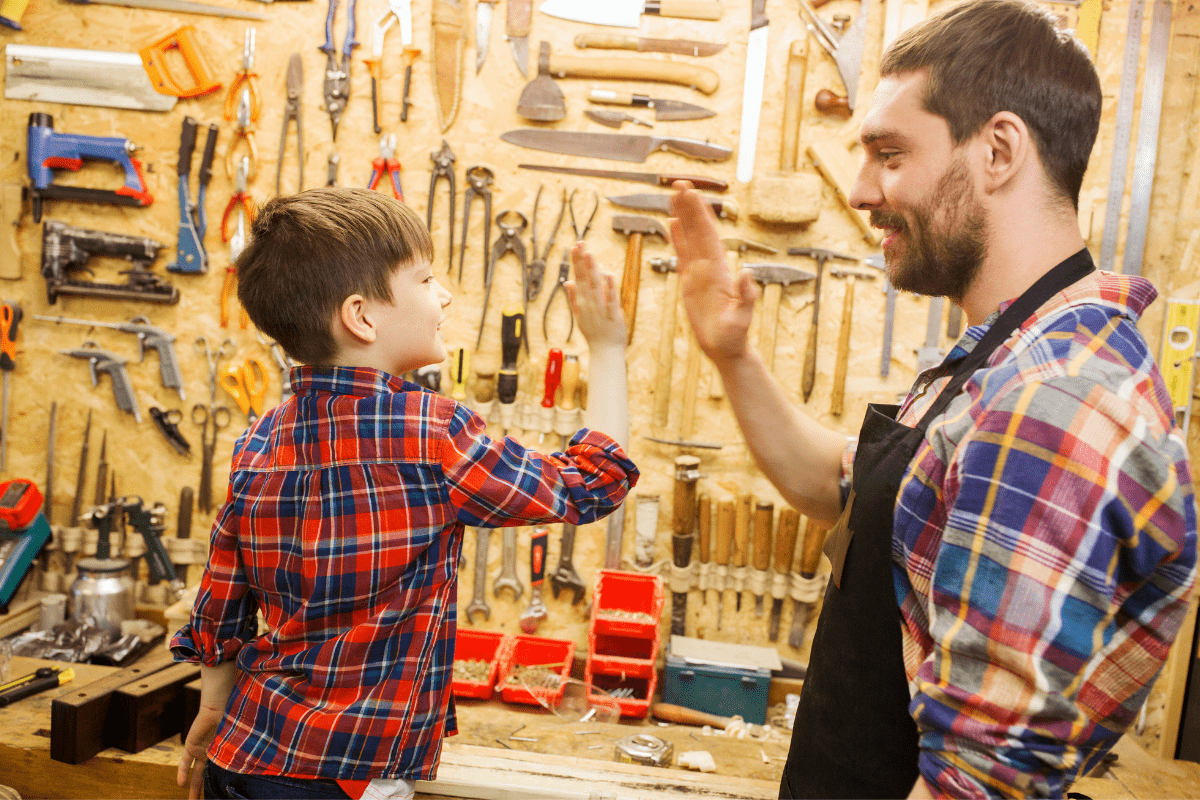10 Tips for Introducing Your Kids to the World of Woodworking
Woodworking is an excellent way to introduce children to the world of creativity and craftsmanship. As our world becomes increasingly digital, it’s easy for young minds to get lost in screens and forget the joy of creating something with their own hands. Woodworking offers a fun and engaging way for kids to develop their problem-solving skills, boost their self-confidence, and unleash their creativity in a tangible and rewarding way.

But before you dive headfirst into your first woodworking project with your child, it’s important to take some precautions to ensure everyone’s safety. While woodworking can be a fun and rewarding activity, it can also be dangerous if proper precautions aren’t taken. Make sure your child is old enough to understand the safety rules and follow them. Teach them how to use the tools properly and supervise them closely while they work. Always wear safety glasses and make sure your child is wearing appropriate clothing and shoes.
Once you’ve taken the necessary safety precautions, it’s time to start exploring the world of woodworking with your child. Start with simple projects that are easy to complete and build up to more complex projects as your child’s skills and confidence grow. Working on a project together can also be a great bonding experience for you and your child, and can create memories that will last a lifetime.

In addition to the practical benefits of woodworking, it also offers a wide range of educational benefits. Woodworking can teach children about math, science, and engineering concepts, as well as help them develop critical thinking, problem-solving, and spatial reasoning skills. It can also help children build patience and perseverance as they work through difficult challenges and learn to overcome obstacles.
Overall, introducing your children to woodworking can be a fun, rewarding, and educational experience for both you and your child. It can help children develop important life skills and create memories that will last a lifetime.

Here are ten tips to help you introduce your children to the world of woodworking.
Start with simple projects
When introducing your children to woodworking, start with simple projects that they can complete quickly. Choose projects that are easy to make, such as birdhouses, picture frames, or bookends. This will help build their confidence and make them excited about the next project.
Teach safety first
Before starting any project, teach your children the importance of safety. Show them how to use tools properly and safely, and explain why it’s crucial to follow safety rules. Make sure they wear protective gear such as goggles, gloves, and ear protection.

Have the right tools
Having the right tools is essential when introducing your children to woodworking. Make sure you have child-sized tools that fit their hands. This will help them feel more comfortable and in control of the tools, which is critical for their safety.
Use soft woods
When starting, use soft woods such as pine or cedar. These are easier to work with and won’t damage tools as quickly as harder woods. The softer woods are also less likely to cause injuries if mistakes are made.
Focus on the process, not the outcome
Instead of focusing on the final product, focus on the process of creating something. Encourage your children to take their time, make mistakes, and learn from them. This approach will help them develop the skills they need to become better woodworkers.
Allow for creativity
Encourage your children to be creative and use their imaginations when creating their projects. Let them choose the colors, patterns, and designs they want to use. This will help them develop their sense of creativity and individuality.
Work together
Working together on a woodworking project is an excellent way to bond with your children. It also provides an opportunity to teach them valuable skills and help them develop their confidence.

Make it fun
Woodworking should be fun and enjoyable for your children. Make it a game or a competition, or turn it into a family project. This will help keep your children engaged and excited about woodworking.
Provide positive feedback
When your children complete a project, be sure to provide positive feedback. Let them know that you are proud of them and that they did a great job. This will help boost their confidence and encourage them to continue woodworking.
Practice makes perfect
Finally, encourage your children to practice woodworking regularly. The more they practice, the better they will become. Encourage them to try new things, make mistakes, and learn from them.

In conclusion, introducing your children to woodworking is an excellent way to teach them valuable skills and help them develop their creativity and confidence. However, it’s essential to take proper precautions to ensure their safety. By following these ten tips, you can help your children enjoy woodworking while keeping them safe.









